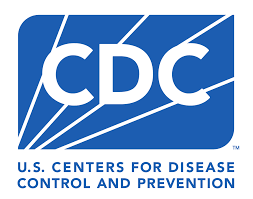CDC projects hospitalization burden for 2025–2026 respiratory season
Editor's Note
The Centers for Disease Control and Prevention (CDC) expects that COVID-19, influenza, and RSV will together drive a similar level of peak hospitalizations this fall and winter compared to last season, according to a CDC August 25 outlook. The assessment, updated every 2 months, provides a baseline for public health and hospital preparedness while acknowledging uncertainty in how the season may unfold.
The agency projects with low to moderate confidence the combined peak hospitalization burden will fall within 20% of last year’s levels. This estimate draws on historical data, expert opinion, and COVID-19 scenario modeling. Although combined peaks have varied in timing across recent seasons, their magnitude has remained relatively stable. The CDC cautions, however, that multiple peaks are possible this year depending on how the three viruses interact.
COVID-19 poses the greatest uncertainty. Summer activity is already rising in much of the US, which could influence fall and winter patterns. Modeling indicates if no new variant with moderate immune-escape properties emerges, COVID-19’s peak hospitalization rate would likely be similar to last year’s. If such a variant does appear, the peak could be higher, with the national burden likely cresting in January.
For influenza, the outlook points to a likely moderate season after 2024–2025 was classified as high severity, the first such designation since 2017–2018. Consecutive high-severity seasons are rare but remain possible. Vaccination will play a central role in mitigating hospitalizations, particularly among older adults, who benefited most from last season’s estimated 240,000 hospitalizations prevented by flu shots.
RSV hospitalizations are also expected to mirror last season, supported by wider use of newly available immunizations. Pediatric monoclonal antibody products and maternal vaccination reduced infant hospitalizations in 2024–2025, and uptake is expected to rise further this year. Among older adults, vaccine coverage nearly doubled last season, and real-world data suggest effectiveness in reducing hospitalizations and emergency visits, though protection may wane over time.
Several factors could still drive a higher-than-expected combined peak: emergence of a more immune-evasive SARS-CoV-2 variant, circulation of a severe influenza subtype, or lower vaccine uptake and effectiveness across the three viruses. Experts also highlight the unpredictability of timing, as COVID-19, influenza, and RSV often overlap in December and January but can peak earlier or later depending on the region.
Read More >>

 Free Daily News
Free Daily News